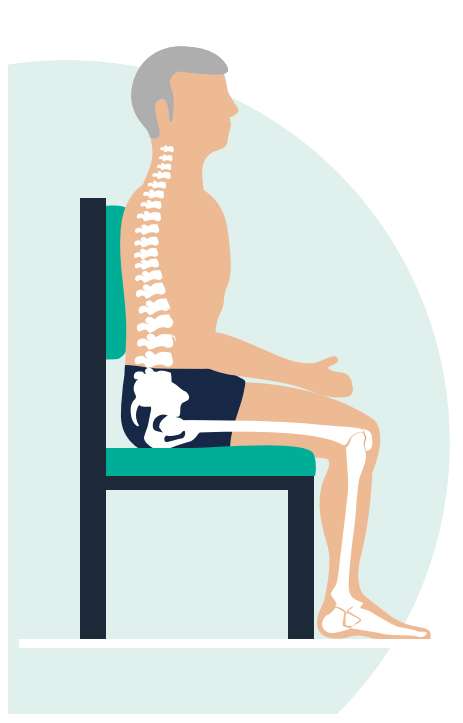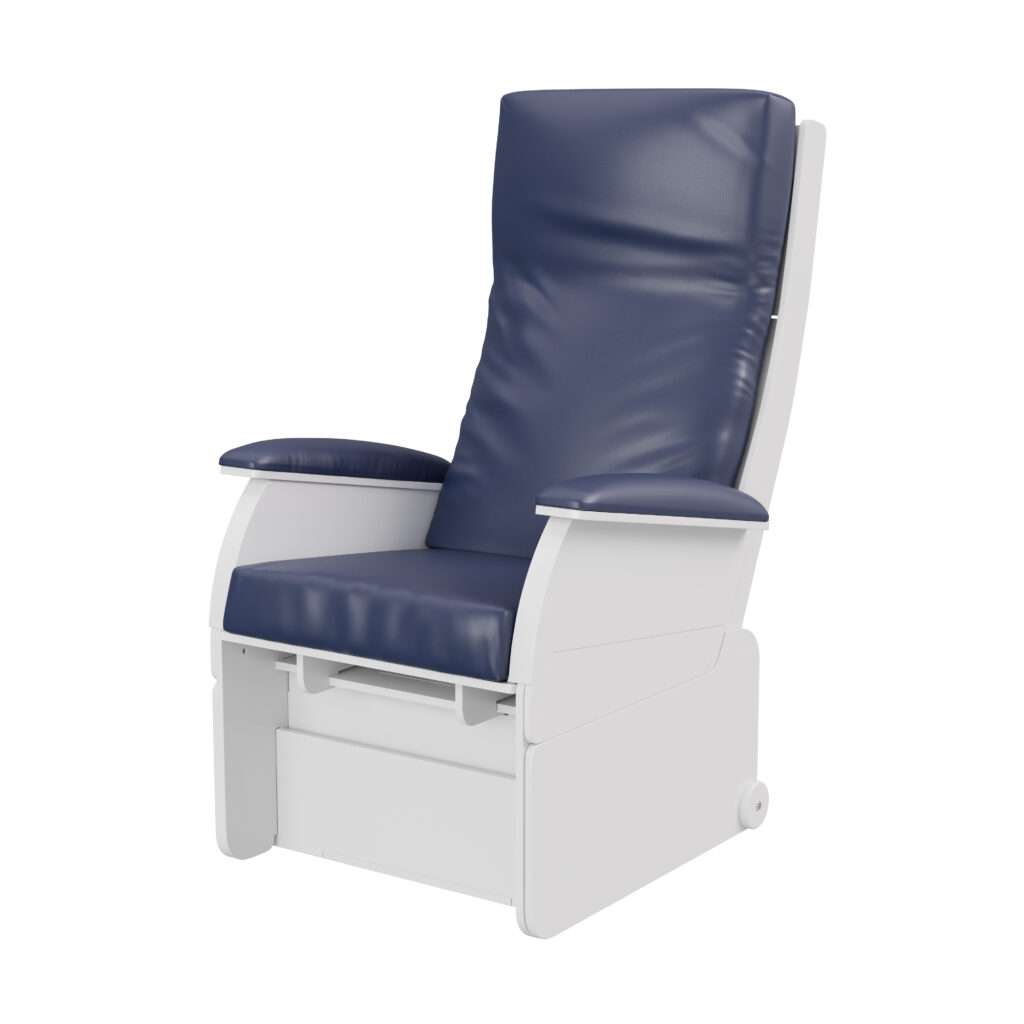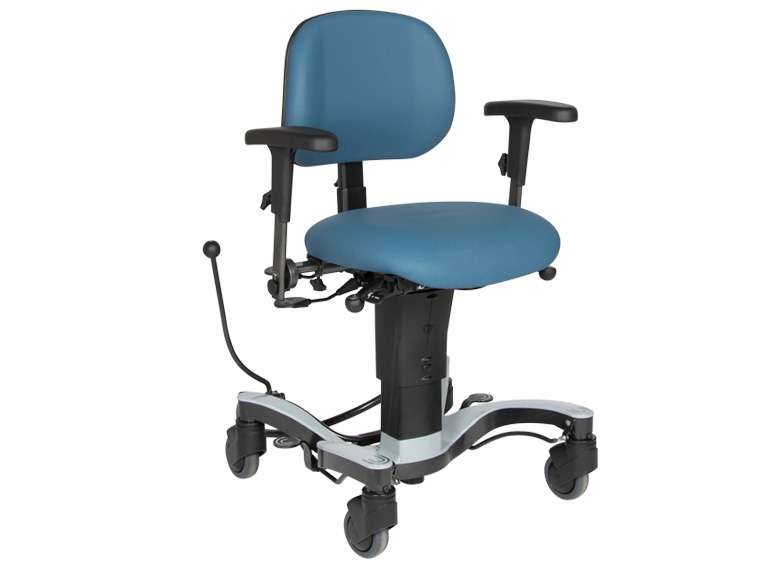Recovering from hip surgery or replacement requires patience and the right equipment to aid mobility and comfort. One of the most crucial aspects of post-surgical recovery is ensuring you have appropriate seating to support healing and prevent complications.
Jump straight to…
Different Types of Hip Fractures and Surgery
In a previous article we covered the main types of hip fractures and surgical procedures needed to repair them.
Hip fractures vary in severity and location, requiring different surgical procedures. In some cases, a total hip replacement may be necessary, especially in older adults with brittle bones. A total hip replacement involves replacing the hip joint with a titanium implant, ensuring better mobility post-recovery.
The Importance of Early Mobilisation
It is important to have the right equipment in place to help the patient recover fully, and return to previous levels of mobility as quickly as possible when they are back at home.
Early mobilisation is essential for a smooth recovery. Having the right medical equipment and furniture in place ensures a faster return to mobility. Using proper seating, beds, and walking aids minimises strain on the hip joint and supports overall rehabilitation.
Good Seating Practices Before and After Hip Surgery
The guidelines to follow will usually be set out for you by your doctor or surgeon, but there are some helpful NHS publications online with general advice. Your doctor will give be able to give specific guidance on timeframes and details, but these are some of the general precautions to observe when recovering from hip surgery or replacement.
Pre-surgery:
- Don’t bend your knee more than 90 degrees. This will involve having the right height chair, toilet seat, and not bending forward in bed.
- Raised toilet seat. This inexpensive mobility aid increases your sitting height on the toilet so your hip is not bent more than 90 degrees. Try and get one with armrests, so you can lower yourself down while keeping the affected leg straight.
- Getting into a chair. When getting into a chair, straighten the affected leg and lower yourself down holding onto the armrests.
Post-surgery:
- Don’t bend your knee more than 90 degrees, until advised safe to do so.
- When getting into a chair, straighten the affected leg and hold onto the armrests to gently lower yourself down.
- Physiotherapy and OT teams will assist you in formulating your exercise programme and specifying equipment for you to use.
- As well as carrying out the exercises specified by your physio, take care to observe the correct movements and avoid twisting or crossing your legs.
- Use the walking aid specified by your physio to avoid falls when moving around.

90 degree sitting angle
Best Chairs for Hip Surgery Patients
Suitable seating should help the user maintain the correct posture, while making it easy for them to mobilise on and off the chair, so they can recover from surgery as quickly as possible.
A high-backed chair with a head support is usually best for this purpose, with the following features:
- Seat height adjustment. The hip joint needs to be higher than the knee so the hip doesn’t bend more than 90 degrees, so this is an important metric to get right.
- Armrest height adjustment. Having the right armrest height is important to help get in and out of the chair easily.
- Standaid compatible. Having a chair than can be used in conjunction with a standaid like the Sara Stedy is convenient if the user struggles to push themselves out of the chair.
HiBack Bedside Chair
The HiBack Bedside Chair is designed specifically for post-surgery recovery, including the following features:
- Adjustable seat height to maintain the correct hip-to-knee ratio.
- Supportive armrests to assist with sitting and standing.
- Ergonomic back support for improved posture.
- Wipeable antimicrobial fabric for easy cleaning and hygiene maintenance.

HiBack Bedside Chair
VELA Activity Chair
Another seating option for patients that need to be able to move around the home environment but keep safe from falling is the VELA activity chair.
This chair helps the user keep their whole body positioned forward and move easily around the kitchen when preparing meals, avoiding any twisting or bending movements that could potentially harm the new hip. The brake and anti-tip bar provide extra stability, and the seat height, tilt and back angle can all be adjusted to achieve optimum positioning.

VELA Activity chair
Hire Option
Our flexible hire service allows you to continue benefitting from specialist seating for as long as you need it, without the full capital outlay of buying a new chair.
Conclusion
If you are facing a hip replacement or notice pain or stiffness around the hip joint, it’s important to consult a medical professional and get this assistance you need to protect your health and prepare in the best way possible if surgery is required.
Why not reach out to one of our seating experts for more advice? We are used to working with Occupational Therapists and Physios, specifying seating as part of care plans for people needing surgery.
Get Expert Advice
FAQs
Q: What is the best chair height for post-hip surgery recovery?
A: The seat height should be adjusted so that your hip remains higher than your knee when seated, typically around 18-22 inches depending on your height.
Q: Should I use a recliner after hip surgery?
A: A recliner is generally not recommended as it may encourage improper posture and excessive bending of the hip. A high-backed chair with firm support is preferable.
Q: Can I sit in a regular chair after hip surgery?
A: No, regular chairs may be too low or lack proper support, increasing the risk of bending your hip beyond 90 degrees.
Q: How long do I need to use a specialized chair after surgery?
A: Most patients need to use a specialised chair for at least 6-12 weeks or as recommended by their healthcare provider.














